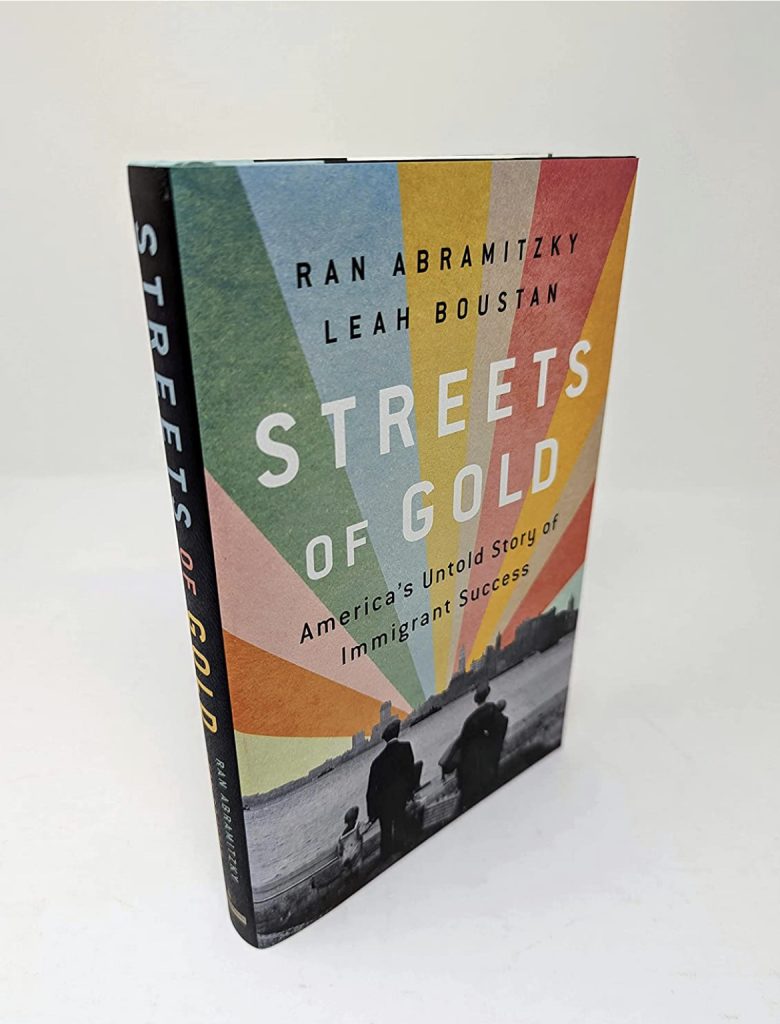
The American immigration council’s newsletter recently introduced me to a book, a product of research previously impossible due to the quantity and type of data involved. It unravels the myth of the model European immigrants of 1860-1920 compared to those who immigrated after the 1960s. It finds that the two sets are remarkably similar in upward mobility, children’s successes and a becoming ‘from many, one’.
Immigration carries a unique stature in America. On one side is the country’s badge of honor as a country that was built by immigrants despite the devastation and destruction of Native American culture and people. On another is the unfortunate history where previously (immigrated) citizens do much to shun the new wave. Jon Stewart, once opining on a historical context of immigration stated it well
America has always been a nation of immigrants who hate the newest immigrants
It was a sentiment I saw in the textile museum in Fall River, MA. The museum clearly showed how the British who’d set up the mills, hired and (mis)treated the Germans, the Irish and others who came after. Each new wave was relegated to their own enclaves, children as young as 7 and 8 deployed to unravel stuck threads even if it exposed them to losing precious little fingers.
The book first draws comparison between those Western Europeans (Britain, Germany, Norway) and the subsequent southeastern (Italians) who came in late 19th. Then it compares the past set to late 20th century immigrants from Asia and Latin America. The similarities in why and how they came, what they brought in pain and talent, how they adopted the new homeland, and the exclusions they suffered are uncanny.
Equally uncanny is how both sets toiled for decades in their roles but their children were the ones to propel beyond expectations. The myth of ‘pulling up by the bootstraps in no time’ isn’t borne out by the data collected, aligned, and presented. In fact, the book undoes a few representative stories through presentation of lineage and research. Of course, reading as an immigrant myself married to a genealogist who traces her history to the Mayflower and various (proven) soldiers in America’s earliest wars gave me a great set of reasons to devour the book quickly.
The authors utilized technological innovations and inventions to unearth the stories embedded in generations of immigrants. The early unofficial and subsequent authorized searches across Ancestry.com databases, 8 million speeches across the political spectrum since the 1800s, Ellis island voice recordings of immigrants, the many programs written to scrape, curate, analyze, learn via ML and AI, todays tech made this book possible and repeatable to stand scrutiny.
Our country’s structure under the constitution also created natural control groups that helped evaluate the affects of immigration laws between California and Pennsylvania, Florida vs Texas, Cleveland and Cincinnati, and much more. This provided a way to turn back history’s clock and view the effects through comparison and data.
Immigrants are synonymous with America. They arrived in various roles and exhibited an ability and willingness to adopt, adapt, honor, change, assimilate and impact a culture that was once called a melting pot and is now, thankfully, a mosaic. The mosaic makes it possible for a Japanese family in a multiethnic cafe to enjoy a Mexican meal served by a Caucasian. Where a mixed race couple name their children through lenses of pop culture, ancestry, and more.
A fun book worth reading as a traveler on international flight (me reading and writing this), in a genealogical expedition, or better yet, to prepare a speech to Congress or the country.
I came to America because I heard the streets were paved with gold. When I got here, I found out three things: First, the streets weren’t paved with gold; second, they weren’t paved at all; and third, I was expected to pave them.
Unknown Italian immigrant, painted on the wall of the Ellis Island Museum
Great post!